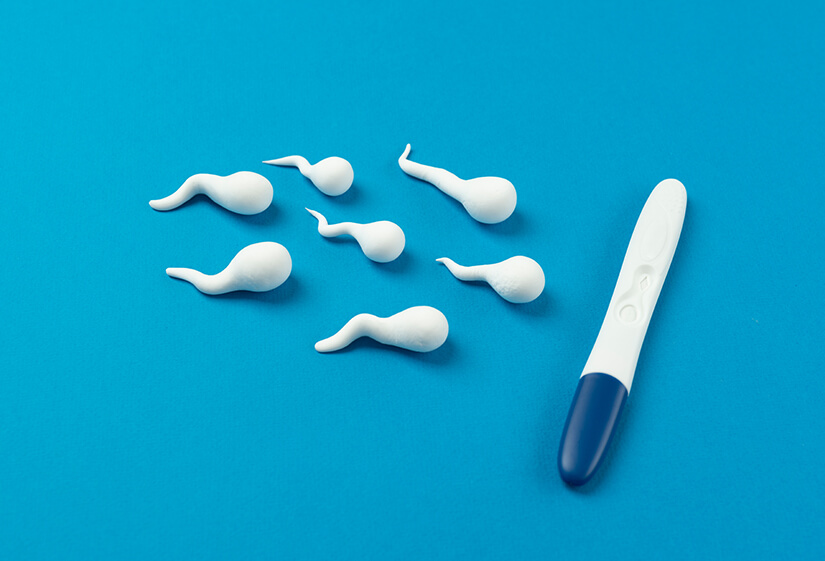Semen Preparation Techniques for Intrauterine Insemination
So, you are considering intrauterine insemination (IUI) as part of your journey to parenthood. Great! Intrauterine Insemination, or IUI treatment, is a very simple and easy procedure where the sperm is collected and directly placed into your partner’s uterus. Simple. Right? But here is a catch. Before insemination, the sperm sample requires some treatment to maximize its potential. Don’t worry; it isn’t about making the sperm look outstanding. It’s about creating an optimal environment for sperm to reach eggs, their destination.
But why is preparation necessary? How is it done? Let’s explore!
Collection of The Semen Sample
The first and foremost step in IUI treatment is semen sample collection.
The collection part is pretty straightforward. It is typically done through masturbation.
Now, here’s the thing: this isn’t just any casual session. The sample needs to be collected in a super clean, sterile, wide-mouth container provided by the IVF centre in Delhi.
After collection, the sample is left for approximately 30 minutes to liquefy. Starting the procedure once the sample has liquefied is critical, and this should all happen within 90 minutes after collection to retain the integrity of the sperm and get the best outcomes.
After collecting the semen sample, it is sent for the washing and preparation process.

Why is Semen Preparation Done?
The raw semen sample contains more than just sperm. It also has a seminal fluid, which, while necessary for sperm health under normal conditions, might be unsuitable for IUI. Here are some compelling reasons why is semen preparations done:
Removal of seminal components: The semen sample contains prostaglandins, enzymes, and other substances that can cause adverse reactions, like uterine contractions, when placed directly into the uterus. Preparing the semen helps remove these components, ensuring no reactions in a female body and a safer environment for sperm to travel and fertilize the egg.
Reduction of Infection Risk: Unwashed semen may carry bacteria or viruses that could lead to uterine infections. The semen-cleaning process significantly reduces the risk of transmitting any infections, protecting both the woman’s health and the potential pregnancy.
Concentration of Motile Sperm: The key to successful fertilization to treat male infertility lies in healthy, motile sperm that can reach the egg. Semen preparation techniques help to separate the most mobile and viable sperm from those that are less likely to fertilize an egg, thereby increasing the chances of conception.
Optimization of the IUI Procedure: The ultimate goal of semen preparation is to increase the efficacy of IUI. By ensuring that only the best sperm are introduced into the uterus, the chances of successful fertilization and pregnancy are significantly enhanced.

Techniques Used for Semen Preparation
When it comes to semen preparation, we’re talking about three main players: sperm washing, density gradient centrifugation and swim-up. Sometimes, they are used collectively to boost the IUI treatment efficacy. Let’s understand these techniques in detail.
Basic Sperm Washing
This most commonly used technique involves mixing the semen with a sterile solution that includes human albumin, followed by a process to separate and concentrate motile sperm.
Initial Preparation: After collecting the semen sample, it is liquefied, divided into fractions, and placed into centrifuge tubes.
Mixing with Medium: The embryologist at the IVF centre in Delhi adds an equal volume of sterile medium (e.g., if the semen volume is 2 ml, then 2 ml of medium is added) and is combined with the semen in each tube. This mixture is then gently blended.
Centrifugation: Now, the samples are spun at a force of 300g for 10 minutes. The sperm will settle down. After centrifugation, the liquid above the settled sperm is carefully removed.
Resuspension and Second Centrifugation: The remaining sperm sample is mixed in a sterile medium and centrifuged for 5 minutes at 300g. The liquid is removed once more, leaving behind the concentrated sperm.
Final Preparation: The sperm sample is put back in a sterile medium and prepared for the IUI treatment.
Density Gradient Centrifugation
The density gradient centrifugation technique separates sperm based on their density. This method helps in selecting the most viable and motile sperm. The magic happens during centrifugation. How? Let’s see!
Initial Preparation: The procedure starts by creating the gradient where a special fluid is added to the tube, with each layer having a different density. Then, the semen sample is carefully placed on top of these layers.
Floating and Sinking: Once the semen is added, the sample is centrifuged. During this process, lighter particles, including less viable sperm, float to the top, while heavier, healthier sperm sink to the bottom.
Formation of the Pellet: The healthy sperm settle at the bottom of the tube, forming what’s known as a pellet. This pellet contains the sperm with the best potential for fertilization.
Collection of Sperms: After centrifugation, the pellet at the bottom, which is rich in viable and motile sperm, is carefully collected to use in IUI treatments.
Swim-Up Technique
Do you know the swim-up technique is the most favoured method for semen preparation? But why? Because it is a simple and effective way to ensure that only the healthiest and most motile sperm are used for a successful IUI procedure. Here is the step-by-step procedure:
Initial Preparation: First and foremost, the semen sample is first allowed to liquefy after ejaculation, usually taking about 30 minutes. This step will separate the sperm from the seminal fluid.
Layering the Semen: Now, a small amount of the liquefied semen is placed in a test tube or a similar container for further proceeding.
Adding Culture Medium: Okay, the semen sample is added to the tube. Now, what’s the next step? The embryologist at the IVF centre in Delhi carefully placed a culture medium over the semen. This medium supports sperm motility and survival outside the body.
Incubation: Now, the most important step, incubation, is performed. The test tube is incubated at 37°C (body temperature) for a period, typically between 30 to 40 minutes. During this time, the most motile sperm swim into the culture medium, separating themselves from less motile sperm, debris, and other seminal fluid components.
Collecting Motile Sperm: Now, the final but significant step comes. After incubation, the top layer of the culture medium, which now contains the most motile sperm, is carefully collected. This layer is rich in sperm, with the best potential for fertilizing an egg.
These collected sperm are ready to use for insemination. Their superior motility increases the chances of fertilizing an egg, making the swim-up technique a preferred choice for selecting sperm in IUI treatment.
Best Sperm Preparation Technique for IUI
Now, the million-dollar question: which technique is better? The answer is “it depends.” The choice between sperm preparation techniques is not one-size-fits-all. While selecting the sperm preparation method, different factors like the quality and motility of the sperm sample come into play.
The decision to choose the method to treat male infertility ultimately rests with the embryologist assessing the sperm’s characteristics. Their expertise guides whether a single technique is used or a combination of both to optimize the sample for IUI.
According to the research, there is no clear winner between density gradient centrifugation and the swim-up technique regarding IUI success rates. Each has its advantages and can be highly effective when tailored to the individual needs of the semen sample.
The Cochrane Collaboration, renowned for its comprehensive reviews of medical evidence, supports the notion that both sperm preparation techniques are comparably effective. Their analysis indicates that no single method has been proven to significantly outperform others in enhancing IUI treatment success rates.
IUI Procedure
The semen sample is collected and prepared. Now, what next? It’s the time to place high-quality sperm directly into a woman’s uterus to facilitate fertilization. The goal is to increase the number of sperm that reach the fallopian tubes and subsequently increase the chance of fertilization.
During the procedure, a thin catheter is inserted through the cervix into the uterus, and the prepared sperm sample is injected. This process is generally quick and painless, though some women may experience mild discomfort.
After placing the sperm, the doctor at the IVF centre in Delhi advises to rest for a short period. That does not mean you must stay in bed for a long time. You can continue with their normal activities. However, you should avoid certain activities and take specific medications to support implantation.
About two weeks after the IUI treatment, a pregnancy test is conducted to check for success.

IVF Treatment
In IVF treatment also the semen sample is prepared similarly by sperm preparation techniques before inseminating it in the egg by ICSI or incubating it with the egg in conventional IVF.
Conclusion!
In the complicated procedure of IUI, semen preparation processes are important to ensure that only the best sperm are used for fertilization. Understanding the different techniques for semen preparation can make you more mentally prepared for it.
If you are considering IUI or IVF treatment, schedule your consultation with Dr Rhythm Gupta, an experienced fertility specialist in Delhi. With her expertise in ART, she can help you to fulfil your dream of starting a family.












